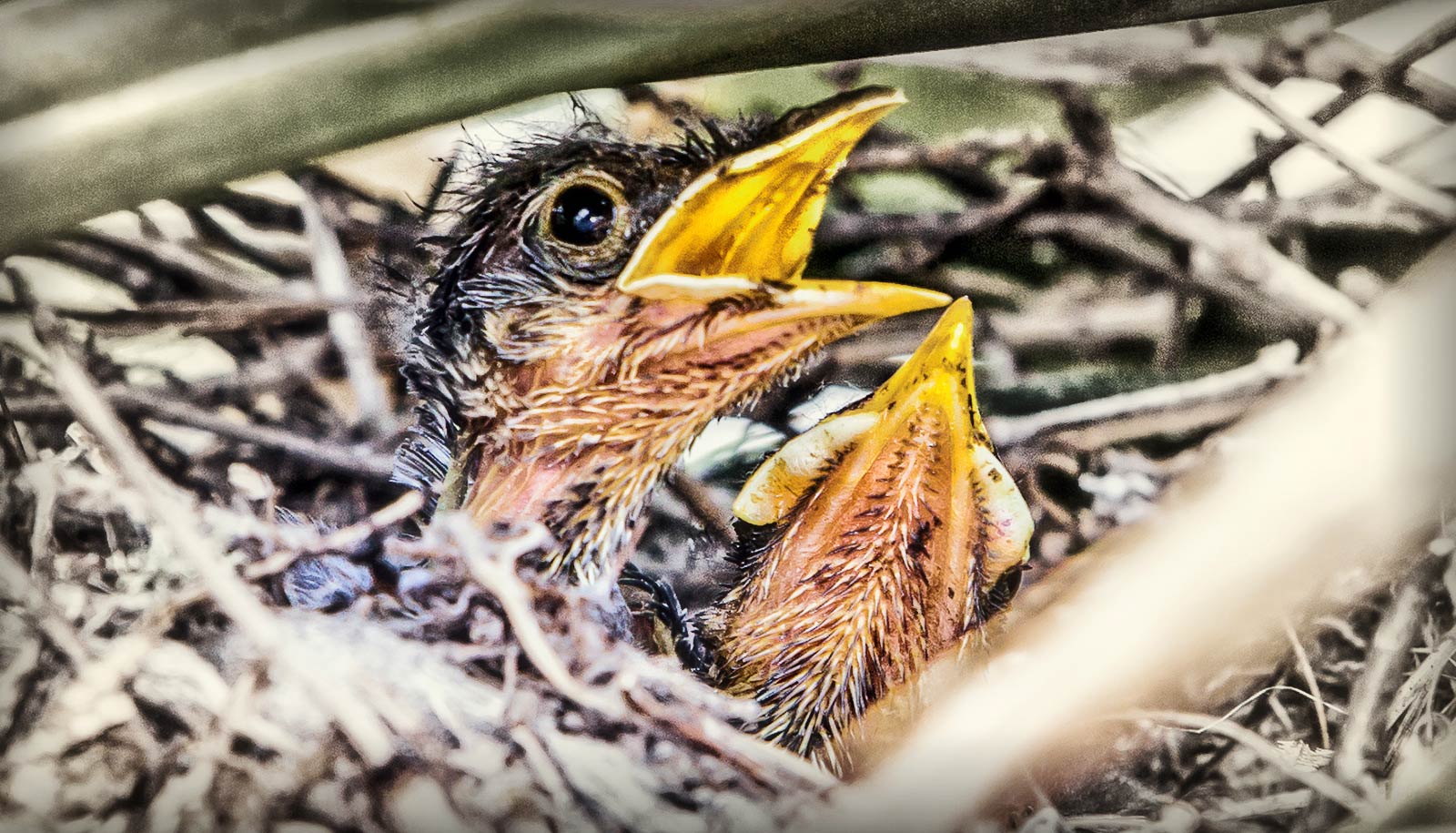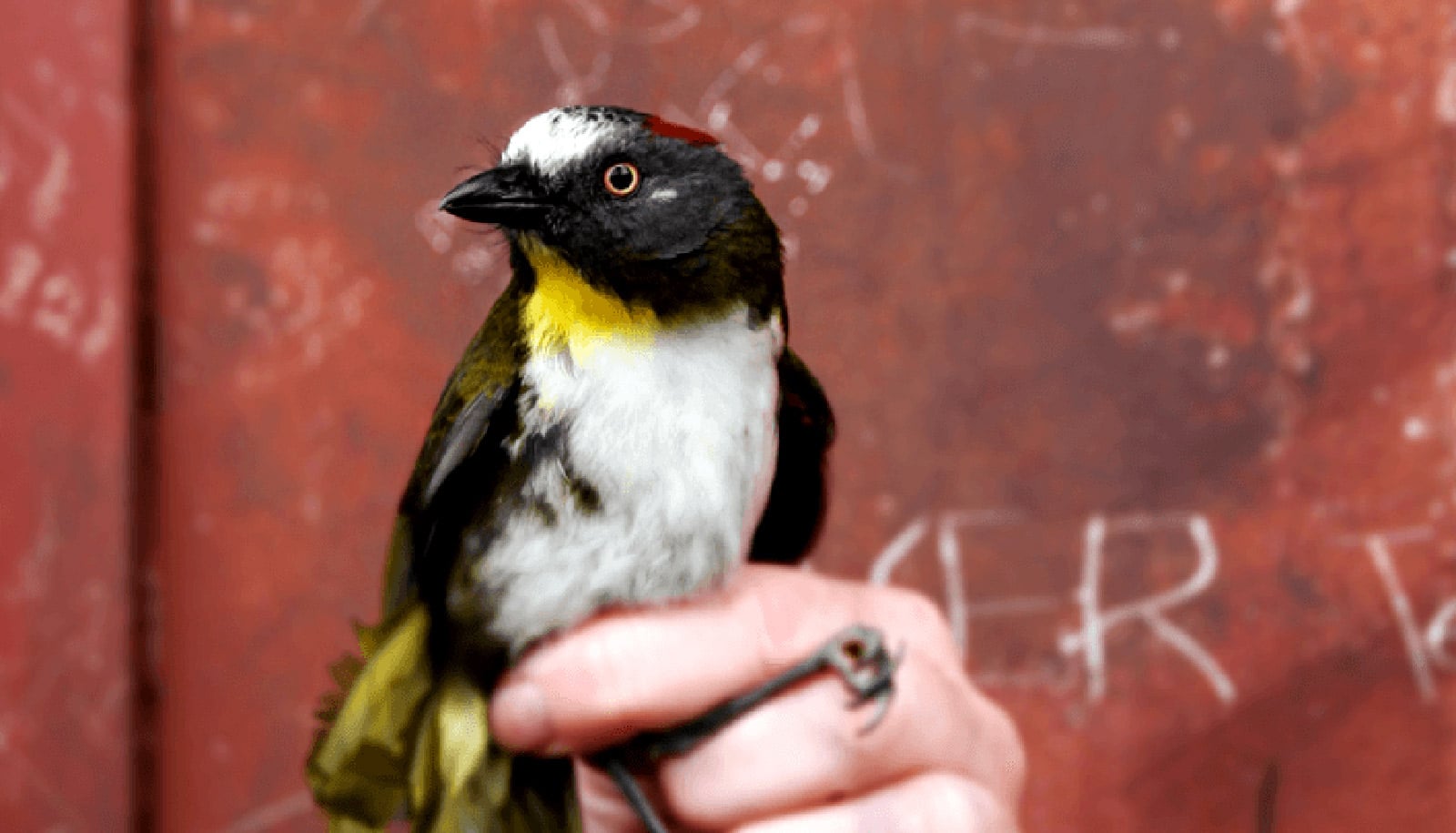Lead contamination in cities could mean fewer hatchlings for mockingbirds, a new study finds.
The researchers found that high lead levels in the soil correlated with less effective nesting for mockingbirds in New Orleans. They also found that lead levels in the blood and feathers of mockingbird hatchlings reflected the soil lead levels in their neighborhood.
Most research into lead toxicity in animals has been done either on very low levels of lead or at lethal levels of toxicity.
The Karubian Lab at Tulane University, led by Jordan Karubian, a professor of ecology and evolutionary biology at the School of Science and Engineering, is looking at the results of sublethal levels of lead, levels high enough to have an impact but not so high as to cause death.
“A lot of what we know about how lead affects animals is about lead poisoning and how much lead will it take to kill an animal,” says Annelise Blanchette, a PhD student in the lab who worked on the study.
“But we don’t really have a fundamental understanding of how sublethal levels of lead are affecting their bodies: their behaviors, their physiology, their development. We started with the mockingbirds because they’re so ubiquitous. Them being everywhere makes them easy to study.”
Mockingbirds are very territorial, which was also useful for this study. “Their territories are so small that they can really dial into a level of lead exposure that is really precise,” says lead author Lauren Hitt, who worked on the research for her honors thesis as an undergraduate student at Tulane. “Something that we proposed in the paper was that it would be interesting to look into whether nestling birds could be good bioindicators, like a canary in a coal mine.”
The team looked for aggression due to lead exposure, as lead has been shown to cause social aggression in humans and other animals, including mockingbirds. What is less well-documented, however, is how that aggression might affect specific aspects of a mockingbird’s life, like nest success or cheating on their mate.
“We did confirm that a third of the nests in our system had nestlings that were sired by more than one father, which is the first time this has been confirmed in mockingbirds,” says Hitt. This extra-pair mating, however, did not seem to have any relation to the lead levels.
On the other hand, nests in the low-lead neighborhood had higher survival rates for the eggs laid than nests in the high-lead neighborhoods. The study found other reasons for egg and nestling deaths, including parents abandoning the nest, nestlings getting sick, and predators.
This is not the end of lead and urban wildlife research for the Karubian Lab. Both Hitt and Blanchette stress how much ecologists still don’t know.
“As the urban environment continues to expand, more animals will be interacting with all of the stressors that come along with it, including heavy metal pollution,” Blanchette says. “We have an opportunity to understand how these animals might be adapting to life in a city and why some might be excluded from it.”
The new study appears in Environmental Research.
Source: Tulane University



